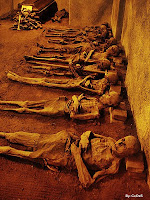 Hvar is the second largest Croatian island in the Adriatic Sea off of the Dalmatian coast. It’s been ranked as one of the ten most beautiful islands in the world.
Hvar is the second largest Croatian island in the Adriatic Sea off of the Dalmatian coast. It’s been ranked as one of the ten most beautiful islands in the world.
My flight from Prague was delayed and I just barely caught the last ferry of the night to Hvar with 5 minutes to spare. The ferry from Split to Stari Grad (47 Kuna = ~$9) took just under two hours and then it was a 20 minute bus ride to Hvar Town.
On the east side of the town’s main square is the Cathedral of St. Stephan. The cathedral and bell tower dates back to the 16th and 17th centuries. It was built on the site of a 6th century church.
The arsenal was built in the 13th century. On the first floor of the arsenal is a theater that was built in 1612. It is one of the oldest in Europe, as well as, the first municipal theater.
In the 15th century the Franciscan monastery was built as a retreat for sailors.
Hvar is known for its nightlife which tends to go well in to the next morning. But the beaches are the best! Directly opposite Hvar town is the Pakleni archipelago and a roundtrip water taxi is only 33 Kuna ($6) to Saint Jerolim Beach.



























